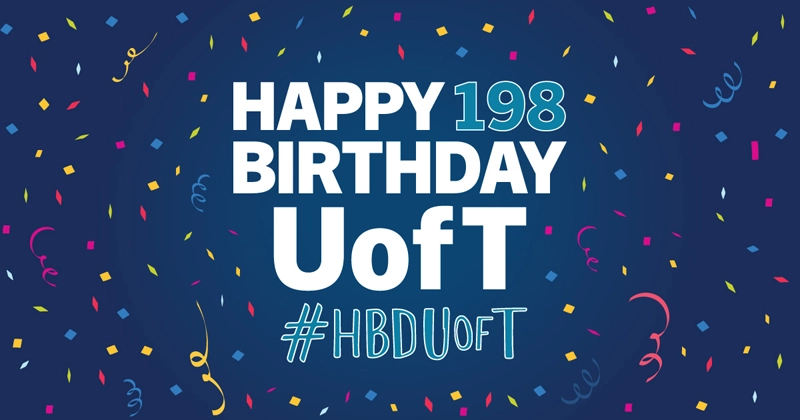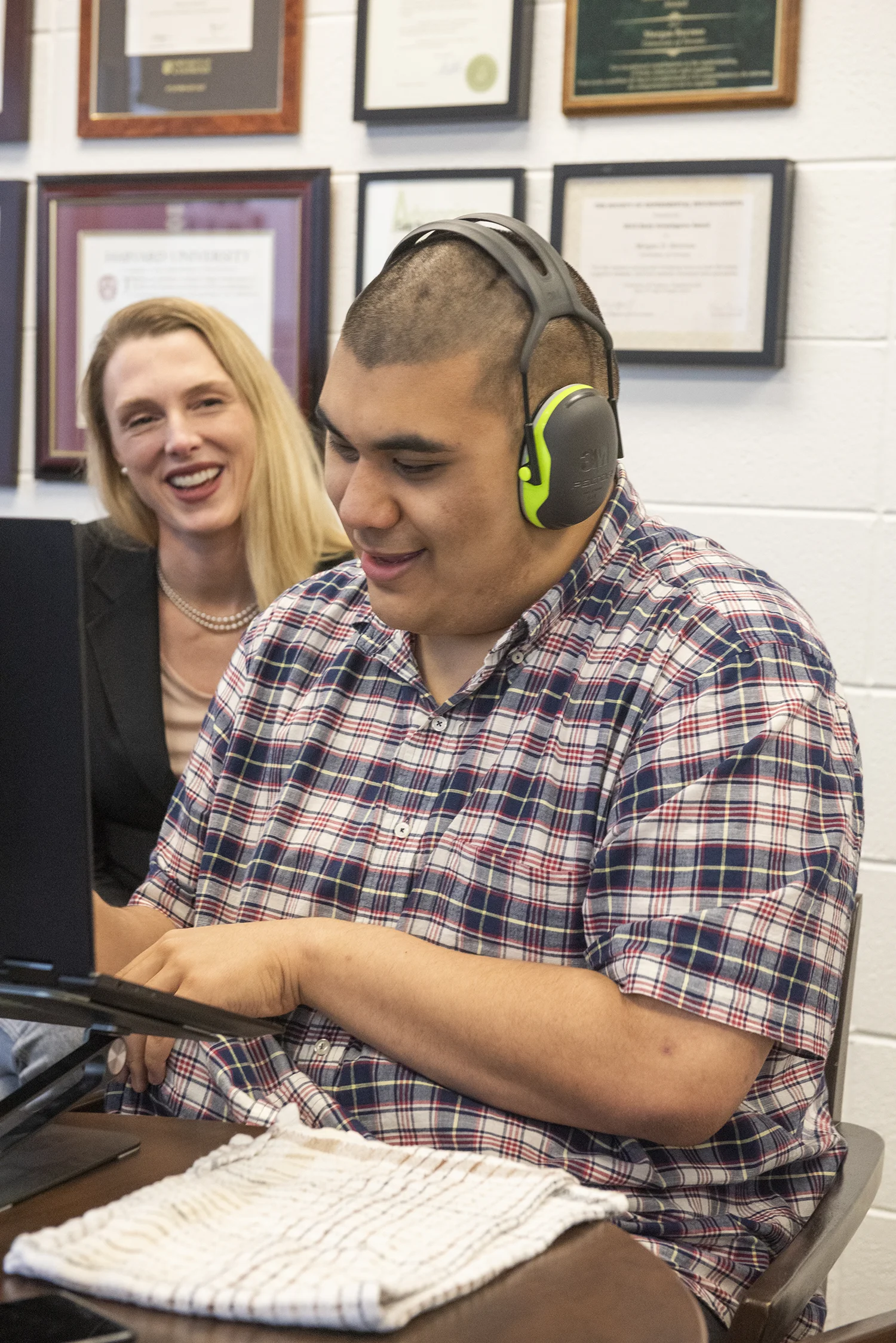On the afternoon of September 19, Hanna Janossy raced into the Rotman School of Management’s striking glass-and-brushed-steel building and took her place at the presenter’s table in a second-floor conference room. The lanky 23-year-old engineering grad had just flown in from Rome, where she was attending a medical conference, and had hurried back to the St. George campus.
Janossy was booked that day for an intensive series of back-to-back interviews with Rotman MBA students. The meetings would serve as preparation for a session two weeks later with members of the Creative Destruction Lab’s “G7” – a panel of successful entrepreneurs who select a handful of teams to enter Rotman’s three-year-old business accelerator. Despite the long flight, Janossy didn’t have jet lag. For the past year, she has immersed herself in the science of circadian rhythms and has developed a research-based technique for avoiding traveller’s fatigue. In fact, based on a gut feeling about the market potential for this knowledge, she and a colleague, Ryan Love, established a company called Syncadian, with an eye to helping travellers and shift workers manage fatigue.
Photo: Anya Chibis
By this past summer, the tiny firm had evolved to the point where Janossy and Love figured they could take a shot at getting into the Creative Destruction Lab, which selects 18 ventures per year from a field of more than 130 applications. The two scientists faced dozens of tough, probing questions over the course of the afternoon about everything from the focus of their business venture to privacy issues. Afterwards, Janossy recalls feeling euphoric. “There was a big intellectual adrenalin rush.” But as she and Love reflected on their admittedly uneven performance that day, they weren’t filled with optimism. “We felt there was no way we’d been accepted.”
That hunch, as it transpired, proved to be wrong. As aspiring entrepreneurs, Janossy, who is finishing a master’s degree in industrial engineering, and Love are aiming to join a club of tech-savvy innovators who increasingly define both the trajectory of our economy and the way we live our lives. Anyone who uses a laptop, carries a cellphone and communicates via social media lives in a world summoned to life by driven, creative people with the vision, guts and networks to create products and services we never knew we’d come to value so highly. Indeed, the early years of the 21st century are defined by iconic entrepreneurs – Steve Jobs, Mark Zuckerberg, Larry Page and Sergey Brin – in the same way Henry Ford, Andrew Carnegie and J.P. Morgan loomed large over the early 20th.
Some business empires accrue to those with the luck to be in the right place at the right time. But as those who have sought to reverse-engineer entrepreneurship will understand, the innovation process, though fraught with the ever-present threat of failure, is not as random as many people believe.
“The ideas are the easy part,” says Will Mitchell, a strategy expert at Rotman and the Anthony S. Fell Chair in New Technology and Commercialization. He points out that once you peel away the mythology surrounding Microsoft’s creation, you can see that Bill Gates pursued a path of discovery that entrepreneurship experts constantly emphasize with aspiring innovators such as Janossy and Love. “He didn’t start with a product,” Mitchell observes. “He started with a sense of what people wanted to do.”
Indeed, successful entrepreneurs have figured out how to refine a discovery so the resulting product or service solves real problems and makes life easier, more efficient or less expensive for their target audience. In other words, the process of bringing a novel technology to market requires entrepreneurs to search relentlessly for unsolved problems, talk to potential customers and reorient their work to reflect what they’re learning about the market.
While many start-ups take root outside universities, many research institutions are looking to create the conditions that allow teams of student entrepreneurs to learn the “ideation” process, network with customers, colleagues and investors, and gain “artisanal” knowledge by working directly with seasoned entrepreneurs, says Ajay Agrawal, the Peter Munk Professor of Entrepreneurship, and the founder of Rotman’s Creative Destruction Lab. In doing these things, he says, startups learn to identify and then achieve key strategic milestones. “This process breaks down how to get from A to B.”
U of T, like many research universities, has had a commercialization office since the early 1980s. But it’s only in the last few years that the university has set up facilities designed to help both undergraduate and graduate students identify and refine good ideas, create business plans, set up companies and launch products or services. Last year, efforts were begun to integrate these business incubators and accelerators. And in October, U of T received a $3.1 million grant from the Ontario government’s campus commercialization program, the proceeds of which will go towards further bolstering the university’s entrepreneurship ecosystem.
Scott Mabury, vice-president of university operations, was a key player in bringing all of U of T’s campus incubators and accelerators under the umbrella of the new Banting & Best Centre (see “Open for Business”). The goal, he says, goes well beyond the traditional revenue streams that flow back to the university in the form of licensing fees from commercialized research. As he points out, university-gestated start-ups provide employment opportunities and real-world experience to students facing uncertain job markets.
“U of T is a top research university,” adds chemistry professor Cynthia Goh, who is the director of the Impact Centre and began developing entrepreneurship courses for undergrads at U of T more than a decade ago. “We want to capture that and give value to society.” Hanna Janossy hails from a long line of woman engineers, going as far back as one of her great-grandmothers. “As a girl growing up,” she says, sitting in a nook in an incubator suite at the MaRS Discovery District, “I was destined to be an engineer.” Her father is an inventor – and an inspiration. “I knew from kindergarten onwards that I would be an entrepreneur. That was never a question. The only question was, in what field?”
A precocious kid, Janossy learned how to captain a sailboat, making her one of the youngest independent sailors in Canada. Later, in her teens, she decided to play violin, and raced through the exams at breakneck speed. Still later, at U of T, Janossy didn’t pay much attention to the difference between undergraduate and graduate courses, and somehow finished most of her master’s degree in fourth year.
While pursuing industrial engineering, she gravitated towards fields such as systems optimization and so-called “human factors” design – how to build things that people can use. Her interests spilled over into biophysics. Janossy spent a semester in Budapest studying that field (her family is originally from Hungary) and another in Zurich, soaking up the latest research on bio-electronics.
The entrepreneurial aspirations clicked in during a fourthyear “capstone” assignment, when she ended up doing a course-based project with the research arm of the Department of National Defence. After lobbying one of the staff for an interesting task, she found herself assigned to a team focused on fatigue research.
The military, she says, had been dealing with fatigue-related accidents and had created a new rest policy, “but there were no guidelines to help soldiers shift their circadian rhythms.” The fatigue researchers had published lots of studies with detailed graphics, but they came to the realization that these documents did little to help military personnel.
Janossy’s capstone project was a smartphone app that allowed users to input variables such as sleep patterns, flight details and destinations, and generate a tailored schedule with suggested times for going to sleep, waking up, taking naps, taking melatonin and seeking and avoiding light.
After completing the project, Janossy partnered with Ryan Love, then a post-doctoral fellow in biomedical engineering at U of T who was also working on fatigue with the National Defence research group. Together, Janossy and Love decided to explore the commercialization potential of circadian rhythm research and applied for a position with the UTEST incubator. A partnership between U of T and MaRS Innovation (a not-for-profit organization independent of the MaRS Discovery District), UTEST each year offers five entrepreneur teams a one-year $30,000 grant, office space and access to mentoring and company-building workshops. In exchange, U of T and MaRS Innovation each receive a 2.5% equity stake in the company. The teams, which almost always work in digital technology, can also rely on help from the commercialization experts at U of T’s tech transfer office, says Kurtis Scissons, who manages UTEST.
Since they set up shop at UTEST in the summer, Janossy and Love have been immersed in a prolonged “ideation” phase, generating several potential products, including a jet lag app for travellers and a disposable, do-it-yourself melatonin levels tester. They’re also partnering with a scientist who devised a software model that enables companies and institutions to schedule individual shift workers so they’re not on the job when they’re most likely to be tired. The two principals at Syncadian have also been looking at the potential savings for companies that adopt their technology. “Jet lag is a rather small market,” observes Janossy. But the industry for treating fatigue and sleep disruption, she adds, is worth billions of dollars.
The big opportunities, she continues, will come from corporate or institutional customers willing to buy services related to Syncadian’s modelling software as a way of measuring the cost of retaining additional staff on night shifts whose main role is to catch mistakes committed by fatigued shift workers.
During their session with the G7 in October at the Creative Destruction Lab, Janossy and Love were grilled energetically about how they’d monetize their products, how unions would respond to the scheduling system, and what happens if they can’t build good software – a notoriously tricky aspect of any tech venture, especially if attempted quickly.
To their surprise, Janossy and Love learned the next week that they’d been admitted to the program and soon found themselves in a follow-up session, during which they were given some key milestones to achieve over the next two months. “It’s very simple to explain and very difficult to do,” muses Janossy about their marching orders. The gist: that Syncadian is developing too many products geared at too many markets. “We should focus on one really niche market and own it and prove we’d really be successful there.”
Agrawal observes that budding entrepreneurs often struggle to use their best judgment as they launch a new business. Founders face hundreds of choices about how to allocate their time and energy. If they choose poorly, and focus on minutiae, he says, the company will run out of energy and capital. What’s more, Agrawal adds, many university business accelerators fail to teach venture teams about the art and science of making strong, forward-looking choices. “There’s a failure in the market for judgment,” he says.
When Rotman was developing what became the Creative Destruction Lab, Agrawal says, the faculty looked at other university-based accelerators and then decided to develop a unique model intended to avoid shortcomings, such as providing ventures with too much coddling and not enough world-tested guidance. Each team is assigned a mentor – Syncadian’s is Michael Serbinis, an angel investor who co-founded Kobo, the e-reader company. The mentor pushes ventures to focus on the things that matter, and ask tough, probing questions about the viability of their business model.
Photo: Anya Chibis
Agrawal also notes that the Lab deliberately chose not to offer facilities, support services or capital, although some teams have landed early-stage equity investments from their G7 mentors. (Rotman MBA students also help some of the teams, and sit in on the G7 “summits,” which take place every two months.) What’s more, the G7 cuts at least one team after every summit, a structure that’s intended to inject some real-world tension into the exercise. “It’s in the rule set and everyone knows that,” says Agrawal. “We’ve tried to bake into the design a certain type of pressure that is measured.”
Jesse Rodgers, the Lab’s director, adds that the selection process seeks to identify entrepreneurs with passion, a technology that can be scaled up for a mass audience and a proven capacity to stick with a demanding process. The evaluators, he adds, take care not to be won over by a slick presentation or a buttoned-up business model. “We want to make sure we don’t miss the ones who can’t communicate well,” he says. “I look for the ones with technology I can’t easily understand. If we miss those people, then we’re not doing our jobs.”
What’s apparent is that the Lab’s talent-spotting technique is producing results. One company that recently graduated from the program – Whirlscape, which has created a new kind of virtual keyboard – has raised $500,000 from angel investors including Y Combinator, a high-profile California accelerator, and BDC Ventures. Another is Bionym, which is selling a wristband that uses a person’s unique cardiac rhythm as a password for various devices. The company initially raised $1.4 million and then secured a second round worth $14 million, says Rodgers.
In fact, the Creative Destruction Lab itself has far exceeded its goals. Rodgers says the Lab targeted $50 million in equity creation by its graduating companies over the first five years of its existence. But in the first year, the companies brought in $65 million, and the second cohort doubled that figure. Today, he adds, the Lab’s 10-year plan is for its graduates to have generated $1 billion of equity.
One cool morning in early November, Janossy and Love turned up at Michael Serbinis’s office in the MaRS building, where he’s developing League, his recently announced health-care start-up. It was the first tête-à-tête with their G7 mentor and so Syncadian’s founders began by grilling Serbinis about why he’d chosen to mentor them. The reason, Serbinis explained, was that they were in a field connected to health and he could see potential synergies down the road.
After Janossy and Love pitched a more detailed version of their vision, Serbinis offered some advice on what they’d need to do to avoid getting cut at the next G7 summit, set for December. He said they’d need to figure out how to gain “market traction” by refining their sales pitch and planning how to get themselves in front of the right people in the companies they’re targeting. If Syncadian’s aim is to use a foothold in the world of small-scale manufacturing as leverage to graduate to larger organizations, such as hospitals or auto parts factories, Janossy realized they’d need to persuade the G7 with more precise estimates of the potential market size. “We didn’t have those numbers.”
Coming out of the session, Janossy and Love nonetheless felt they had a game plan of sorts: they’d use a few personal contacts in the manufacturing world to field test their scheduling software on shift workers as a means of showing how these firms can use the product to identify when their workers are most fatigued, and then schedule accordingly. After working out the bugs and making sure there’s a good value proposition, Janossy says, they could tackle “the big guys”: hospitals, automotive giants, oil and gas rigs.
At present, they’re focused on those specific milestones, but Janossy and Love know there will be a time when they leave the Creative Destruction Lab and must face alone the challenges and risks associated with getting their fledgling company off the ground. They’ve talked often about the entrepreneurial lifestyle, and all the associated questions: money, family, ambition, exit strategies. Mostly, though, they come back to their shared desire to solve a dilemma that afflicts so many people.
“Fatigue is a huge, growing and solvable problem,” Janossy reflects a few hours after meeting with Serbinis. “We’re very motivated to put in our two cents.”
Journalist John Lorinc (BSc 1987 UC) covers politics and business for The Walrus, Spacing magazine and Canadian Business/Profit, where he writes a weekly column about entrepreneurs who export. He is the author of The New City: How the Crisis in Canada’s Urban Centres is Reshaping the Nation (2006).









No Responses to “ From Dream to Reality ”
Congratulations on all your accomplishments, Hanna! We need more strong, bright, and committed women like you in the sciences field!
Congratulations Hanna! In the world of 24/7 Emergency Services Communications Centers there is a great need for a better understanding on ways to reduce fatigue. Scheduling is key and your research on this topic is of interest to me and my colleagues. I look forward to further articles and some of your findings and strategies. Good luck!